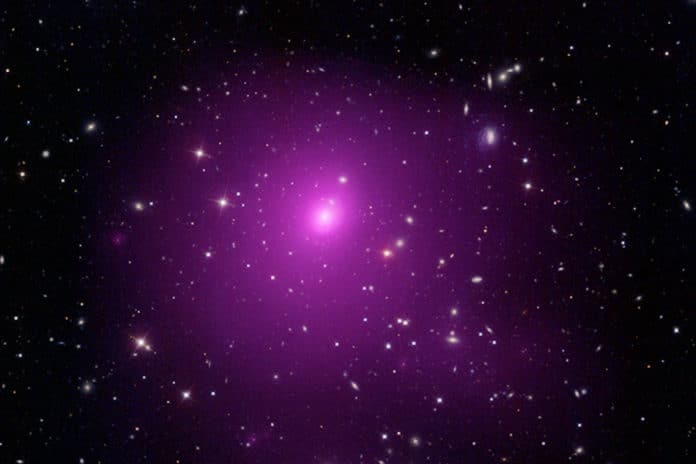Using the Very Large Telescope (VLT), astronomers at the Max Planck Institute have discovered the largest black hole ever observed at the center of Holm 15A, a galaxy about 700 million light-years away.
The black hole is more than twice as large as the previously observed record-setter at 40 billion times the mass of the Sun and 10,000 times the black hole’s mass at the Milky Way’s center.
In addition to VLT, scientists used additional data from the Chile observatory. The data helped them map the structure of Holm 15A in unprecedented detail and run simulations to explain the galaxy’s formation and unusually faint center.
Fascinatingly, the black hole is powerful and large enough to either swallow up the closest stars or toss them toward the galaxy’s edge.
Scientists noted, “We use orbit-based, axisymmetric Schwarzschild models to analyze the stellar kinematics of Holm 15A from new high-resolution, wide-field spectral observations obtained with MUSE at the VLT. We find a supermassive black hole (SMBH) with a mass of (4.0 ± 0.80) × 1010 solar masses at the center of Holm 15A.”
“This is the most massive black hole with a direct dynamical detection in the local Universe.”
At the mass of Holm 15A* as determined, its Schwarzschild radius would be around 790 AU.
What’s more, the SMBH of Holm 15A is not only the most massive one to date; it is also four to nine times larger than expected, given the galaxy’s bulge stellar mass and the galaxy’s stellar velocity dispersion.
Scientists are continuing their studies to conduct more complex and detailed modeling and compare their results against their observations to try to figure out exactly how the black hole formed.
Journal Reference
- Mehrgan, K., Thomas, J., Saglia, R., Mazzalay, X., Erwin, P., Bender, R., Kluge, M., & Fabricius, M. (2019). A 40-billion solar mass black hole in the extreme core of Holm 15A, the central galaxy of Abell 85. The Astrophysical Journal. DOI: 10.3847/1538-4357/ab5856
